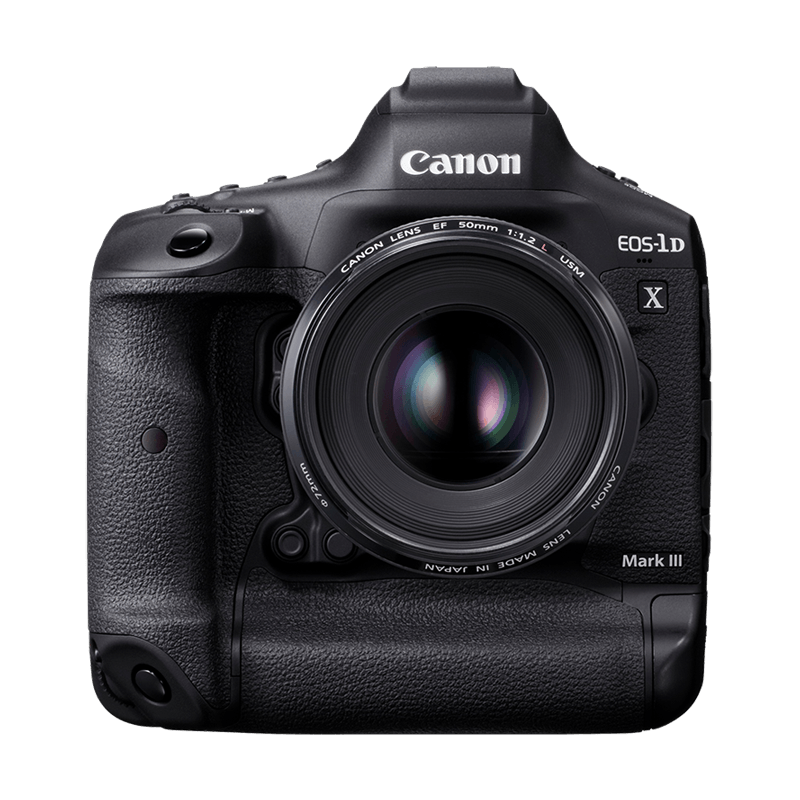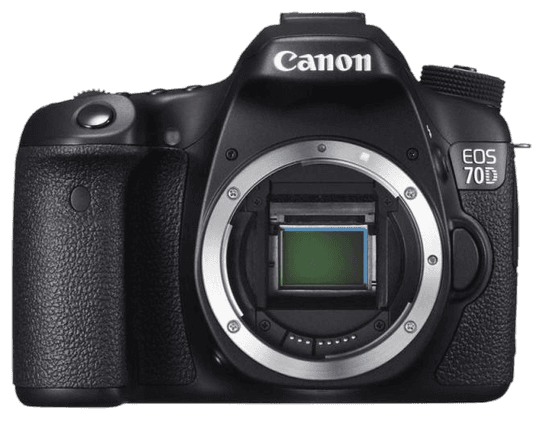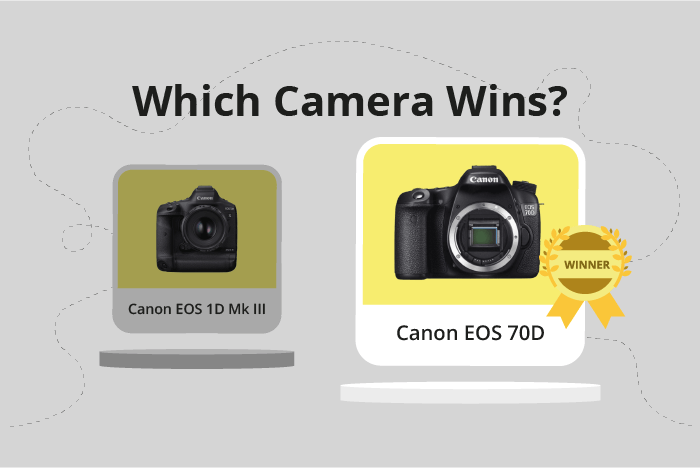Canon EOS 1D Mark III vs EOS 70D Comparison
Canon EOS 1D Mark III

Canon EOS 70D

The Canon EOS 70D emerges as the winner with a score of 60/100, while the Canon EOS 1D Mark III trails behind with a score of 52/100. Both cameras are DSLRs, announced in 2013 and 2007, respectively. They share common specifications like camera type and announcement dates.
The Canon EOS 70D has a higher score, making it a better camera. Additionally, it is lighter, weighing 755g, and more compact with dimensions of 139 x 104 x 79mm. Its launch price of $1199 also makes it more affordable than the Canon EOS 1D Mark III.
On the other hand, the Canon EOS 1D Mark III is heavier at 1335g and larger in size, measuring 156 x 157 x 80mm. Its launch price of $4050 is significantly more expensive than the EOS 70D.
Taking into account the scores, size, weight, and price, the Canon EOS 70D is the better choice for most photographers, while the Canon EOS 1D Mark III may be suitable for those who prefer a heavier and larger camera.
Canon EOS 1D Mark III vs EOS 70D Overview and Optics
The Canon EOS 70D wins in the optics comparison with a score of 58/100, while the Canon EOS 1D Mark III scores 50/100. Both cameras share some common specifications, such as having a CMOS sensor, no image stabilization, and compatibility with Canon lenses. However, there are significant differences that set them apart.
The Canon EOS 70D has a higher megapixel count at 20.2, compared to the 10.1 megapixels of the Canon EOS 1D Mark III. This higher resolution enables the 70D to capture more detailed images. Additionally, the 70D has a newer and more advanced DIGIC 5+ processor, which contributes to better image quality and faster processing speeds.
Despite having a lower score, the Canon EOS 1D Mark III has its advantages. The camera has a faster shooting speed of 10 frames per second, compared to the 70D’s 7 frames per second. This makes the 1D Mark III more suitable for capturing fast-moving subjects. Additionally, the 1D Mark III has a slightly higher DXOMARK sensor score of 71, compared to the 70D’s 68, indicating better overall image quality.
When considering the sensor sizes, the Canon EOS 1D Mark III has an APS-H sensor, whereas the Canon EOS 70D has an APS-C sensor. The larger sensor size of the 1D Mark III can contribute to better low-light performance and dynamic range.
To conclude, the Canon EOS 70D outshines the Canon EOS 1D Mark III in terms of optics, mainly due to its higher megapixel count and more advanced processor. However, the 1D Mark III offers a faster shooting speed and a larger sensor size, making it a suitable option for specific photography needs. Ultimately, the choice between these two cameras depends on the photographer’s preferences and requirements.
Canon EOS 1D Mark III vs EOS 70D Video Performance
When it comes to video capabilities, the Canon EOS 1D Mark III does not have any video functionality. On the other hand, the Canon EOS 70D offers video recording options with a score of 43/100.
The Canon EOS 70D has a maximum video resolution of Full HD, providing users with 1920 x 1080 pixels for their videos. Additionally, the camera can record videos at a maximum frame rate of 30fps, ensuring smooth and clear footage. However, the EOS 70D does not come with built-in time-lapse functionality, limiting some creative options for videographers.
Considering the video capabilities, the Canon EOS 70D is the only option between the two cameras for users interested in recording videos. While the EOS 1D Mark III may excel in other areas, its lack of video functionality makes the EOS 70D the clear choice for those who require video recording features.
Canon EOS 1D Mark III vs EOS 70D Features and Benefits
The Canon EOS 70D outperforms the Canon EOS 1D Mark III in terms of features, scoring 70/100 compared to the 1D Mark III’s 49/100. Both cameras share some common specifications, such as a 3-inch screen size, absence of GPS, and lack of Bluetooth connectivity. However, there are significant differences that contribute to the 70D’s higher score.
The EOS 70D has a much higher screen resolution at 1,040,000 dots, compared to the 1D Mark III’s 230,000 dots. This difference results in a clearer and more detailed display on the 70D. Additionally, the 70D’s touchscreen capability allows for easy and intuitive navigation through menus and settings. The 1D Mark III does not have a touchscreen. Another advantage of the 70D is its flip screen, which facilitates shooting from various angles and positions. The 1D Mark III lacks this feature.
In favor of the 1D Mark III, both cameras have built-in Wi-Fi connectivity, allowing for easy transfer of images and remote control of the camera. Despite the lower feature score, the 1D Mark III still offers this useful functionality.
Taking these points into account, it is evident that the Canon EOS 70D’s higher feature score reflects its superior specifications in screen resolution, touchscreen, and flip screen capabilities. While the Canon EOS 1D Mark III may not excel in these areas, it does maintain useful Wi-Fi connectivity. Ultimately, the Canon EOS 70D proves to be the better camera due to its enhanced features and user-friendly design.
Canon EOS 1D Mark III vs EOS 70D Storage and Battery
The Canon EOS 1D Mark III outperforms the Canon EOS 70D in storage and battery with a score of 84/100 compared to the 70D’s 37/100. Both cameras lack USB charging and accept SD/SDHC memory cards. The 1D Mark III has an advantage with two memory card slots and compatibility with Compact Flash (Type I or II) cards. Its battery life of 2200 shots is significantly longer than the 70D’s 920 shots, utilizing the LP-E5 battery type.
In contrast, the EOS 70D accepts a wider range of memory cards, including SDXC, but has only one memory card slot. Its battery type is LP-E6, and although it has a shorter battery life, it may still be sufficient for casual users.
Considering these factors, the Canon EOS 1D Mark III is the superior choice for those prioritizing storage and battery capabilities. The Canon EOS 70D may be suitable for casual users who require less demanding battery life and storage options.
Canon EOS 1D Mark III vs EOS 70D – Our Verdict
Are you still undecided about which camera is right for you? Have a look at these popular comparisons that feature the Canon EOS 1D Mark III or the Canon EOS 70D:

